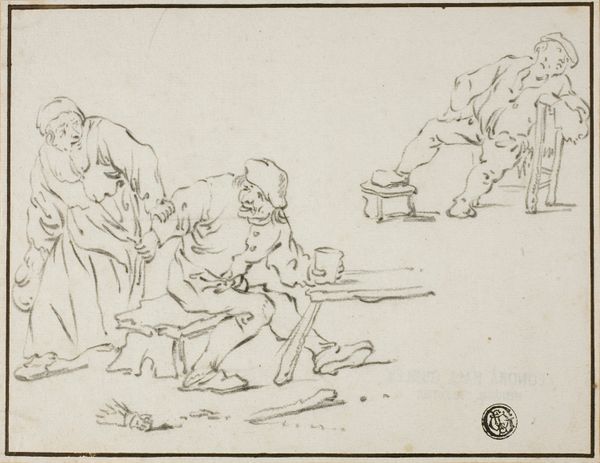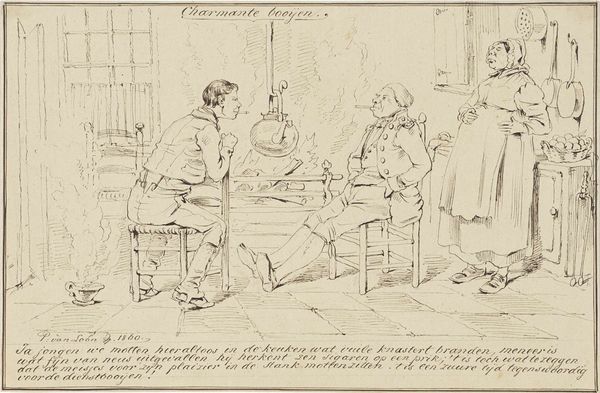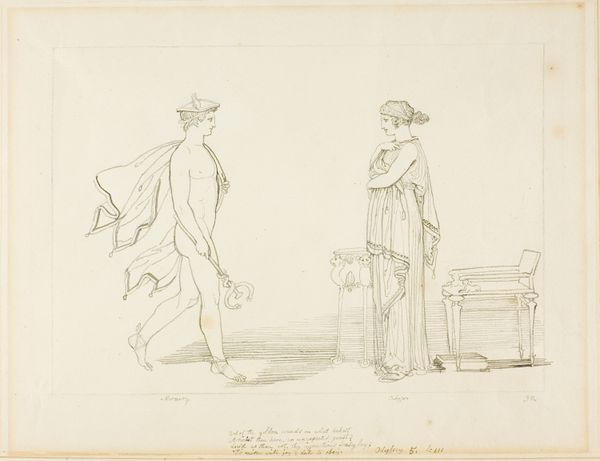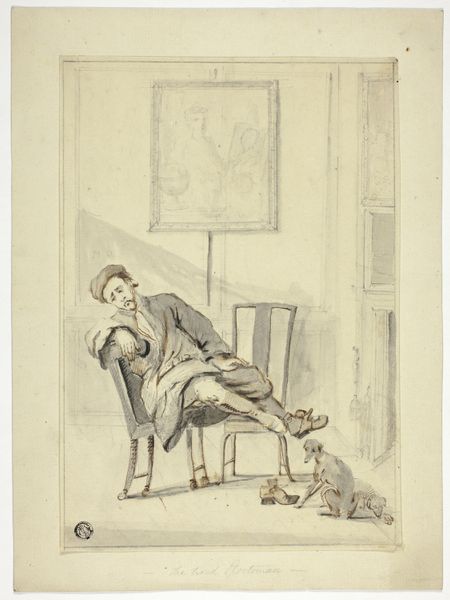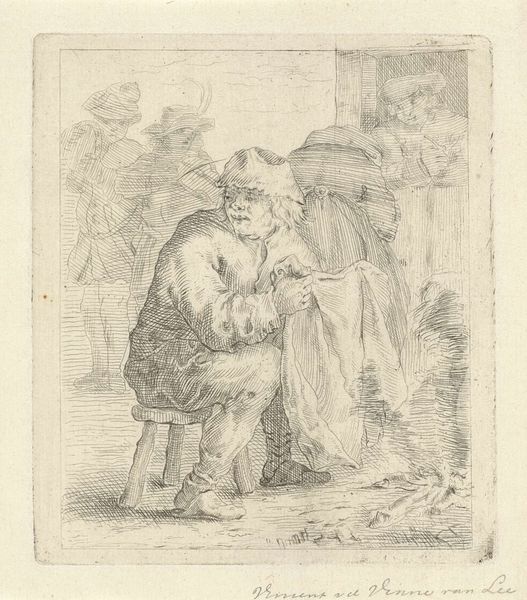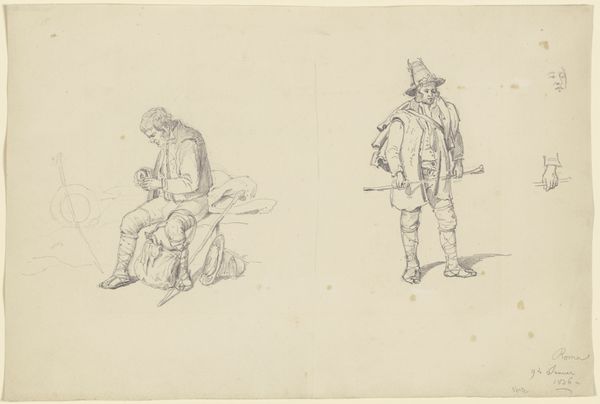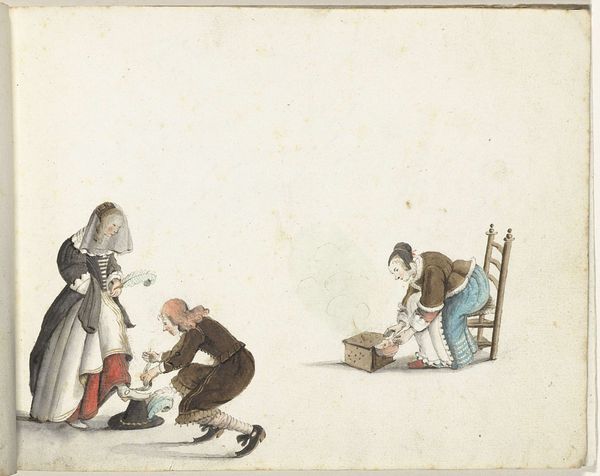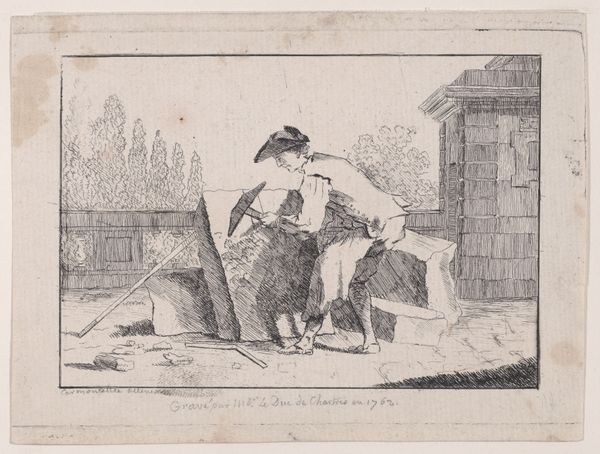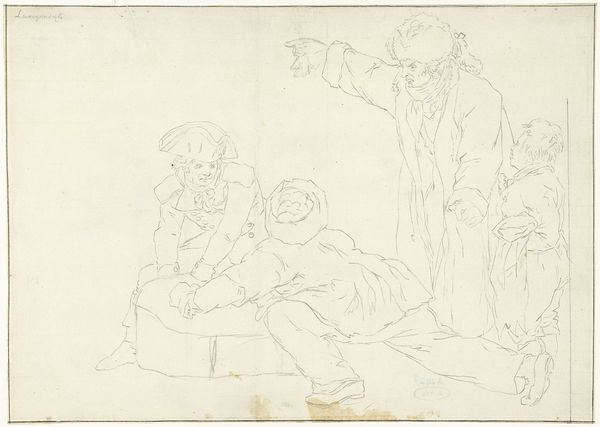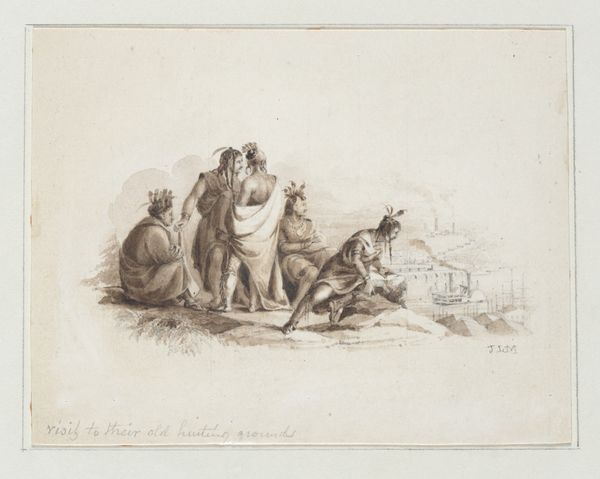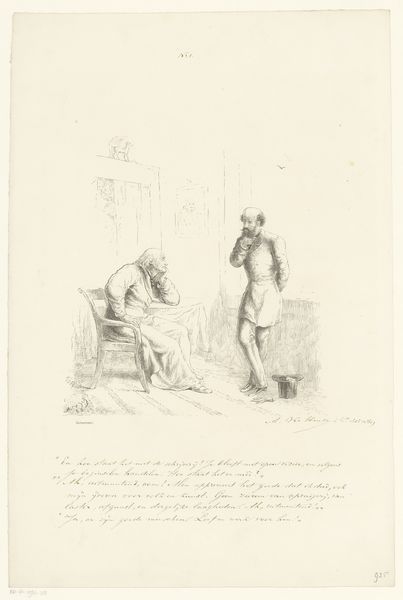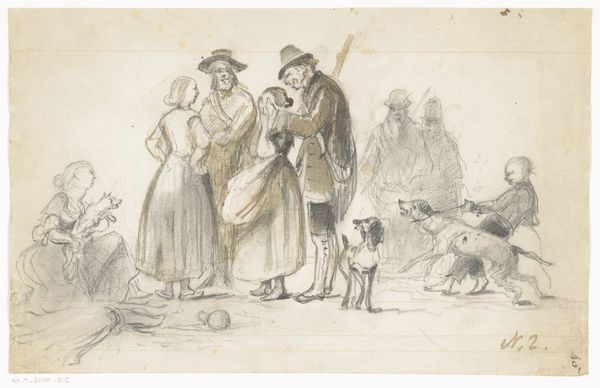
Dimensions: support: 157 x 200 mm
Copyright: CC-BY-NC-ND 4.0 DEED, Photo: Tate
Editor: Here we have Thomas Rowlandson's "Mr Casson’s Shaver", a drawing of uncertain date. I’m struck by how this simple sketch captures such a potent feeling of domestic unease. What stands out to you? Curator: It is interesting how Rowlandson uses caricature not just for humor, but as social commentary. Consider the grotesque features - they amplify class distinctions and critique societal roles. How does this relate to the public perception of barbers in that period? Editor: So, the exaggerated features tell us something about how society viewed the barber's profession? Curator: Precisely. And notice the cat – an animal historically linked with superstition. Its presence adds another layer of societal anxieties reflected in the artwork. It makes you wonder about the role of satire in shaping public opinion. Editor: I never would have considered how the cat and caricatures could speak to social issues of the time. Thanks, that's fascinating. Curator: Indeed. It highlights how art serves as a historical record and a tool for social discourse.
